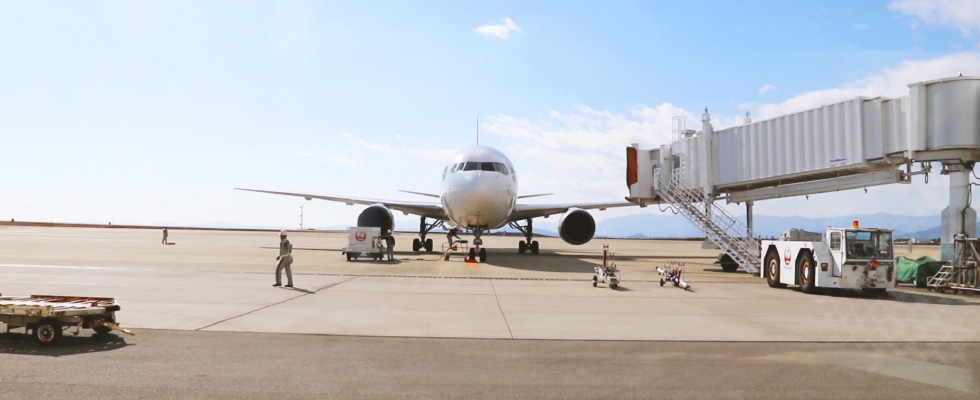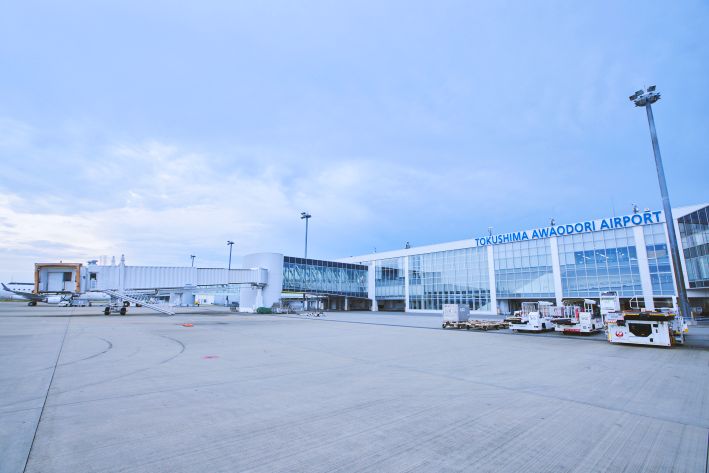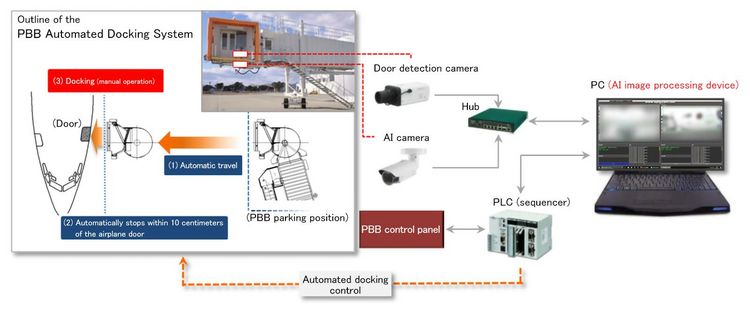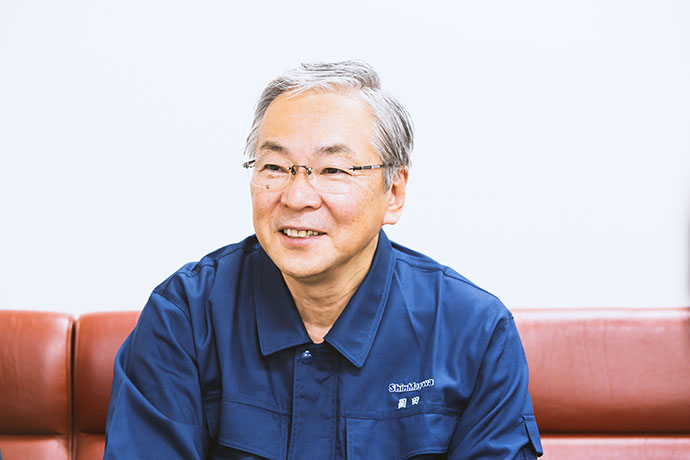Development of "Aircraft Passenger Boarding Bridge" automated docking system
Mission is to realize "smart airports"
"Aircraft Passenger Boarding Bridge" automated docking system equipped with AI

Background of development

The increase in the inbound demand not only accelerates revitalization of airport facilities, but also causes situations which require that actions be taken against the following issues.
- Prevention of human error
- Increase in efficiency of onsite environment, and improvement of working environment and service
- Chronic shortage of human resources (high turnover rate), and reduction of operation training hours
- Improvement in the on-time performance rate
In order to solve and reduce such issues, the Ministry of Land, Infrastructure, Transport and Tourism (MLIT) established the "Aviation Innovation Promotion Official/Public Liaison Conference", to promote labor savings and automation of the ground support services.
Since these issues are common to the world, automation is also promoted in airports of all countries, not only Japan.
ShinMaywa's solution
ShinMaywa's Aircraft Passenger Boarding Bridge (hereinafter PBB) holds the top share in Southeast Asia, where we have delivered more than 1,000 PBBs to airport facilities in Japan and overseas.
Utilizing such advanced technological capability for the "realization of smart airports," we have developed technology to automatically move the PBBs to 10 cm in front of the door of aircraft. During the period from October 2015 to March 2018, the safety of the PBB was confirmed through repeated demonstration tests at the Tokushima Awaodori Airport, where practical application of the automatic connection of the world's first PBB was realized. Currently, this system is being used at the Narita International Airport, in addition to the Tokushima Awaodori Airport.
There were three targets for developing this system including (1) guaranteeing safety, (2) constructing a system with high flexibility, not limited to specific models of aircraft, and (3) connecting the bridge to the same point in the same amount of time by any operator.
Since each aircraft has a different shape and painting, and the parking locations differ each time as well, we had difficulty detecting the position of the door of aircraft. However, as a result of adopting the image recognition of artificial intelligence (AI) and repeated trial and error in prolonged demonstration tests, high accuracy position detection could be realized, and we were able to establish a mechanism to automatically move the boarding bridge to 10 cm in front of the door of aircraft.
Accordingly, ShinMaywa achieved practical application of the first ever system where a PBB could be easily connected accurately by anyone without an operator having skillful techniques, even during bad weather.
We obtained high praise from Tokushima Awaodori Airport where the system was practically applied for the first time, which solved the risks of human error caused by impatience."
Main features

- 1. The PBB can be moved automatically to 10 cm in front of the door of aircraft.
- 2. Operation of "(1)" is possible just by pressing one button.
- 3. The deep learning function of AI improves the accuracy in proportion to the operating frequency.
- 4. The system is also adoptable to initially unset aircraft (models) through deep learning.
Comments of Development Site
Mr. Sonoda Production Department, Parking Systems Division

The development of the system could not be accomplished without performing demonstration tests using an actual aircraft.
We repeated the test on rainy days, windy days and even on snowy days. There was no "compromise" among the entire staff who repeated the tests in order to improve the accuracy, which made the people at the airport facility mention to us "are you still going to continue testing?" I would truly like to thank all the people at the Tokushima Awaodori Airport who were involved in the testing.
I believe that "airports are a place where thNews
e dreams of people gather, aircraft are a means to carry the dreams of people, and the first step people take is on the aircraft passenger boarding bridge." I am very proud of being involved in such work. This is why we challenged the development of new technology with a strong sense of responsibility, because if an accident, such as a PBB unexpectedly colliding with an aircraft occurs, the flight would be cancelled which will eventually affect the "dreams" of people who came to the airport looking forward to taking a trip, taking examinations, or even job interviews. This is not a matter of paying compensation for damaging an object. Although we faced impasses several times, as a result of our continuous challenges, we reached a method of using "AI" for the first time ever even in the company.
We also obtained favorable comments from Narita International Airport which introduced the system, and the system was also adopted for the double-deck A380 the world's largest passenger aircraft made by Airbus. This is the world's first system which automatically connects to three decks simultaneously, including one upper deck and two lower decks.
The greatest motivation for me is to make customers happy, when they actually use a product that I developed myself. I forgot all the difficult times I went through when I heard the praise of a customer who said "this automated docking system is excellent." In order to contribute to the realization of smart airport operation, I will continue to improve the technology even though it is unseen, so that we can support the pleasant travel of all passengers.
